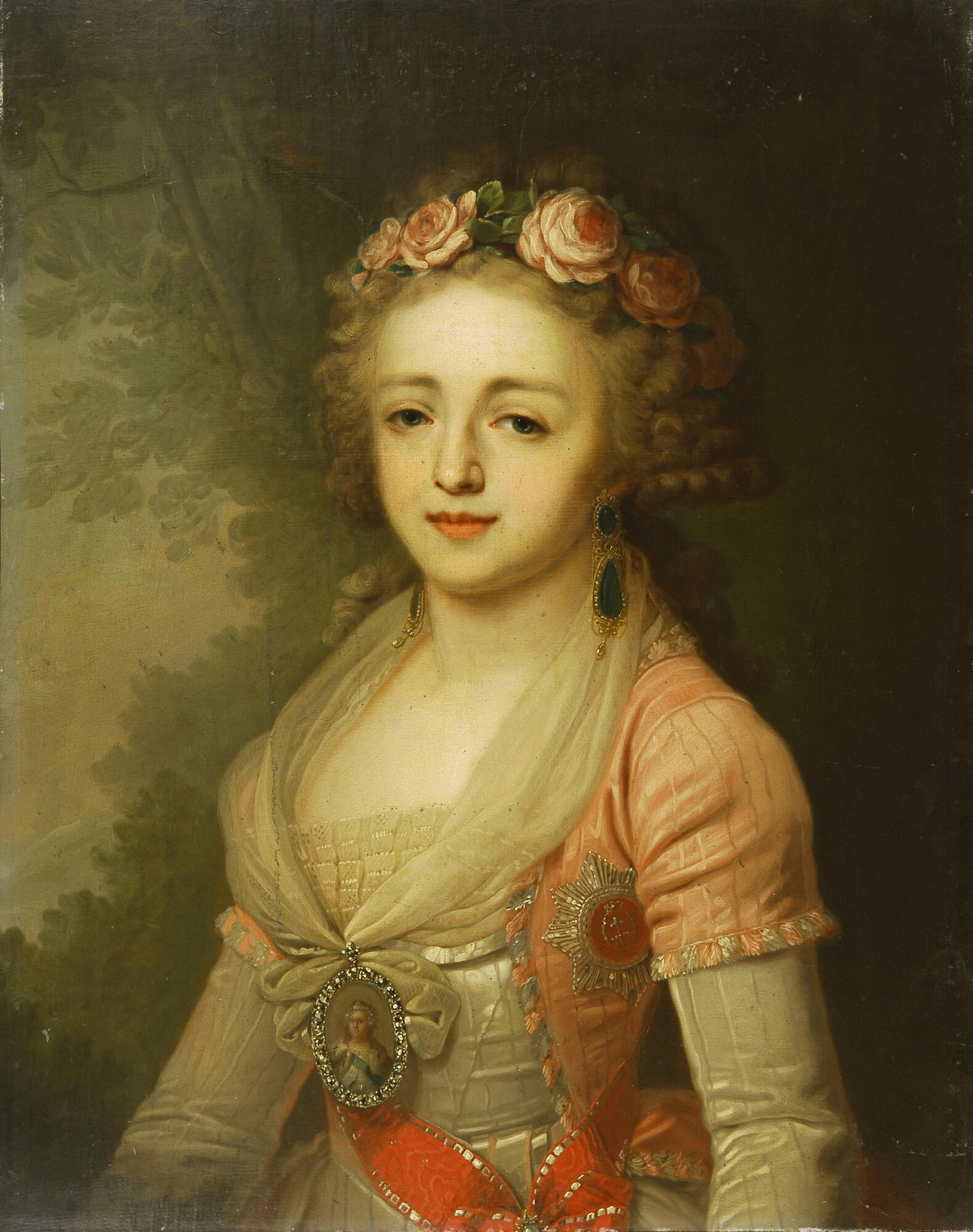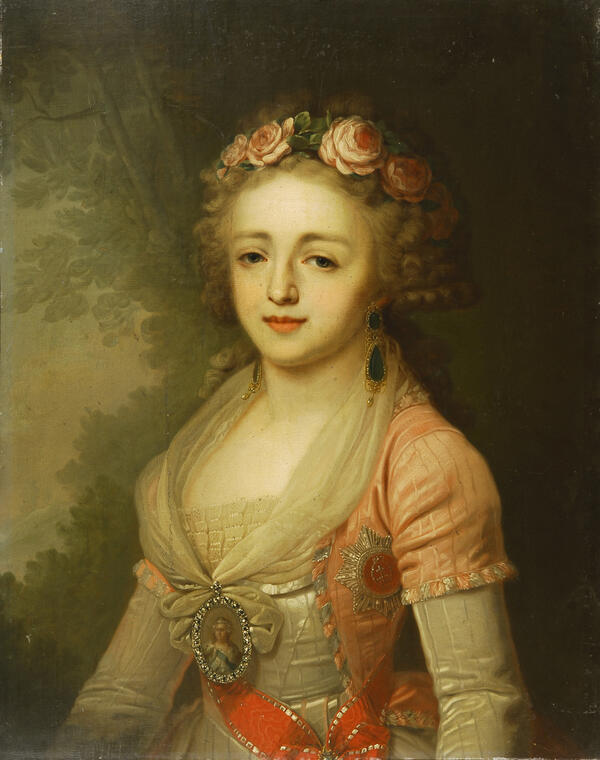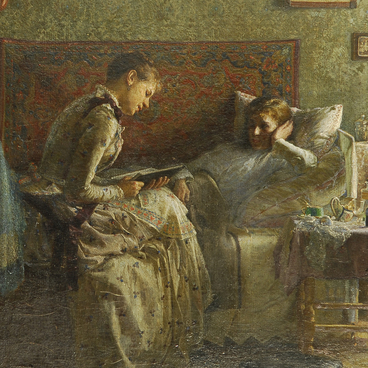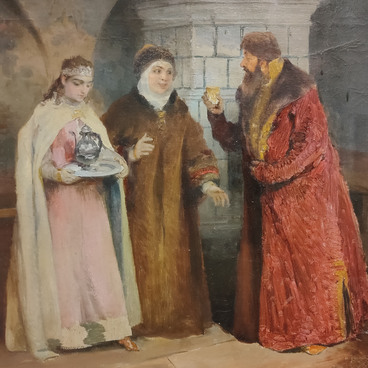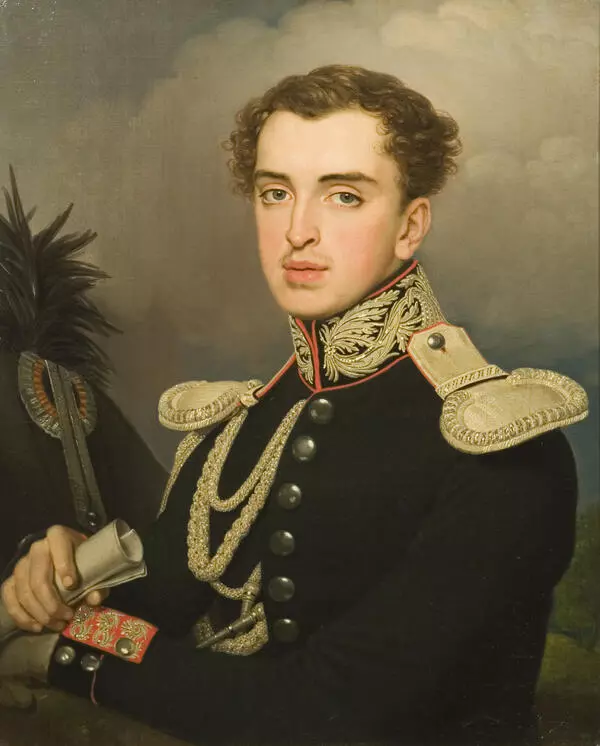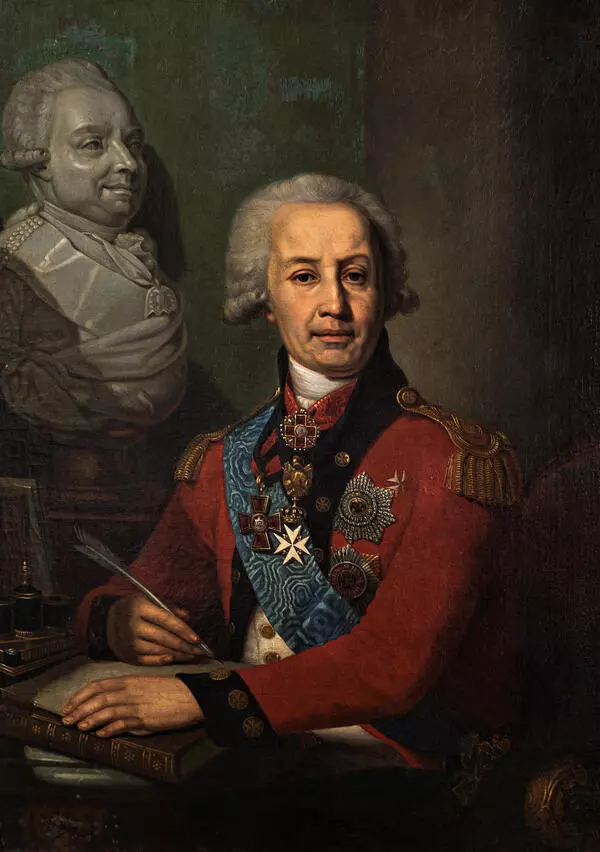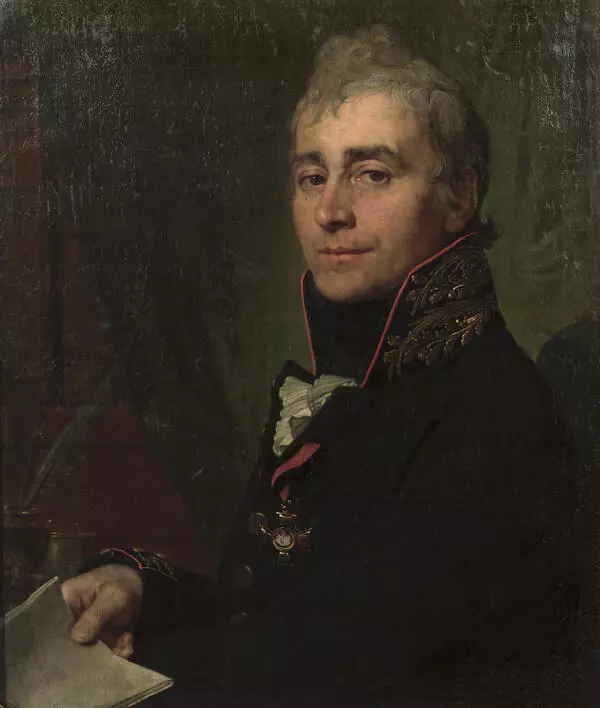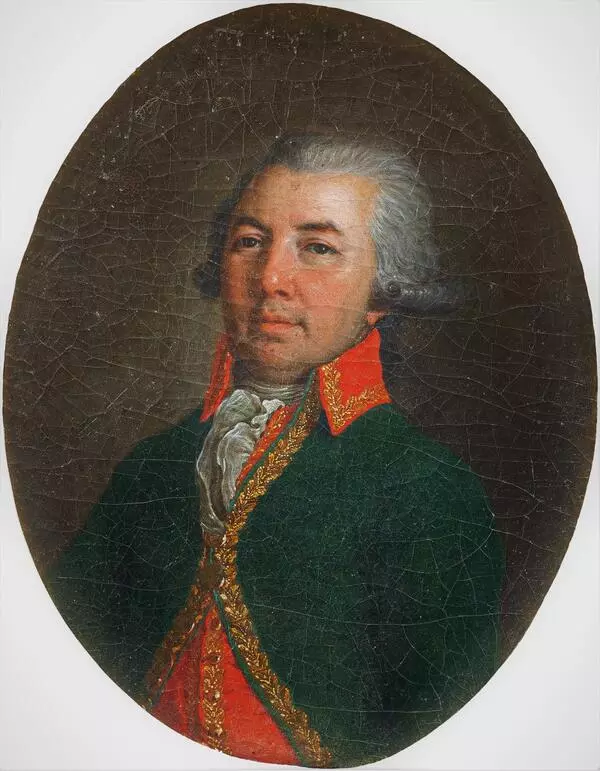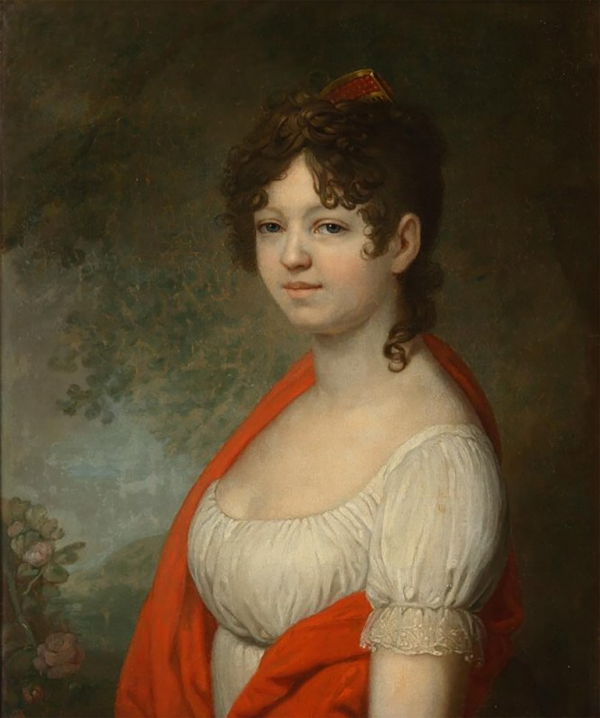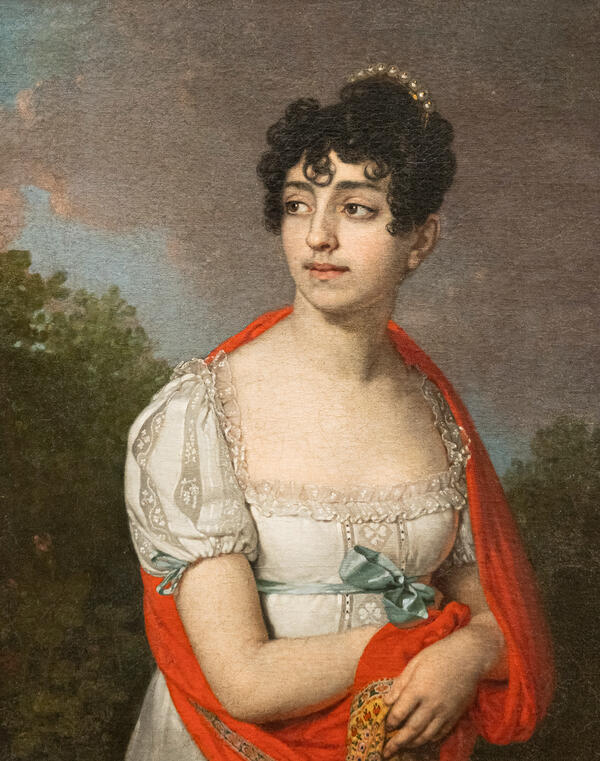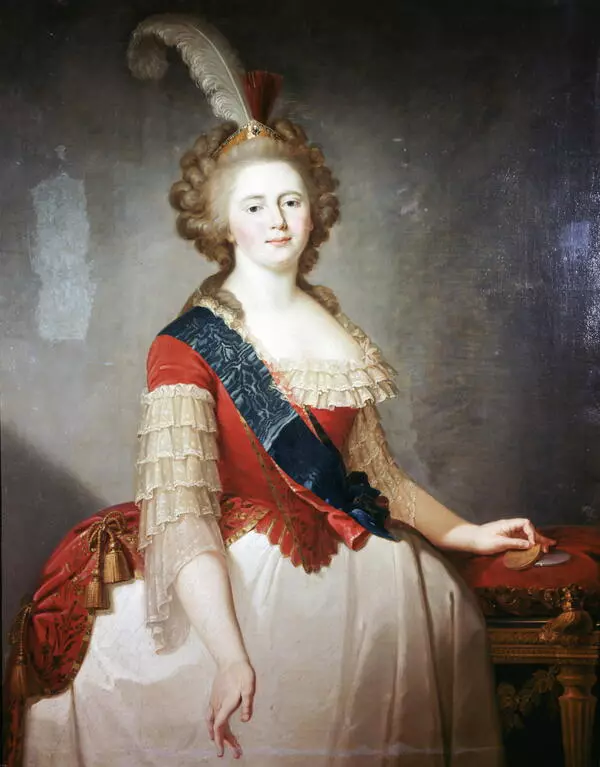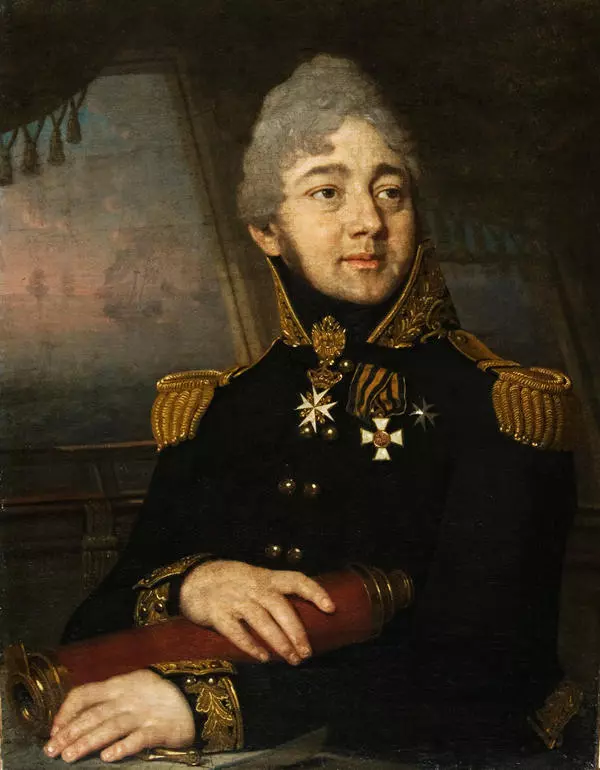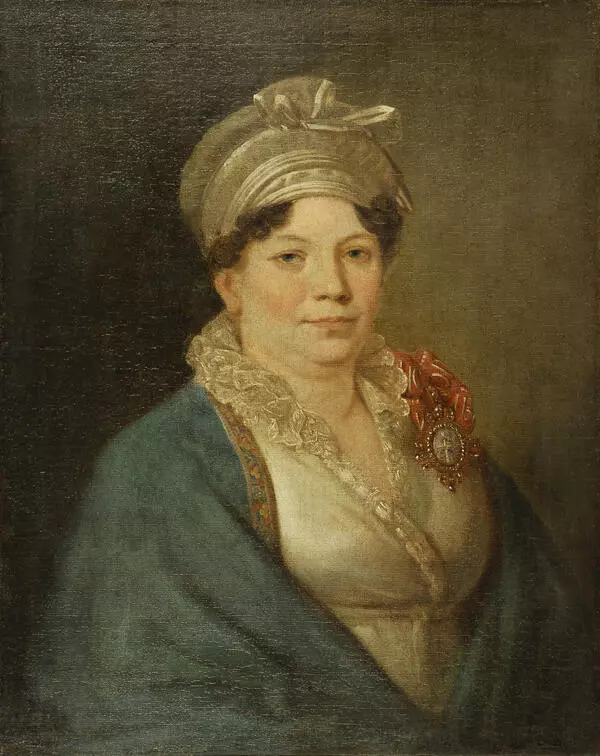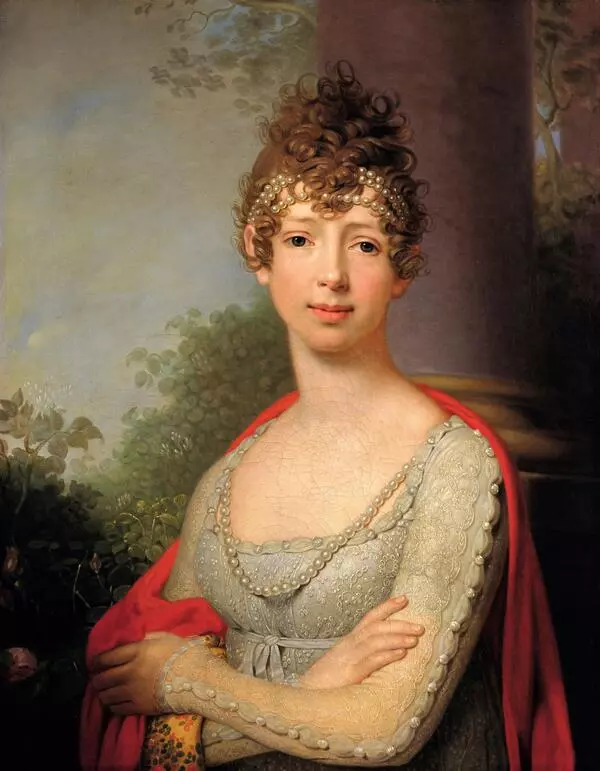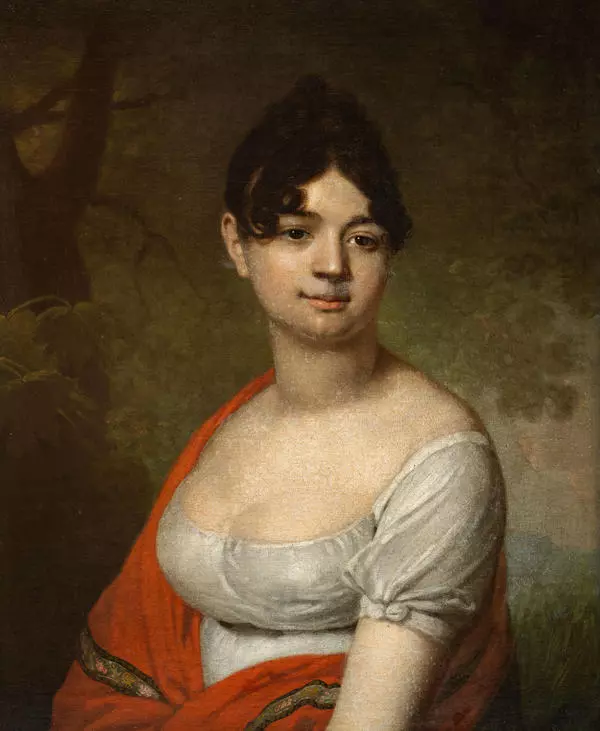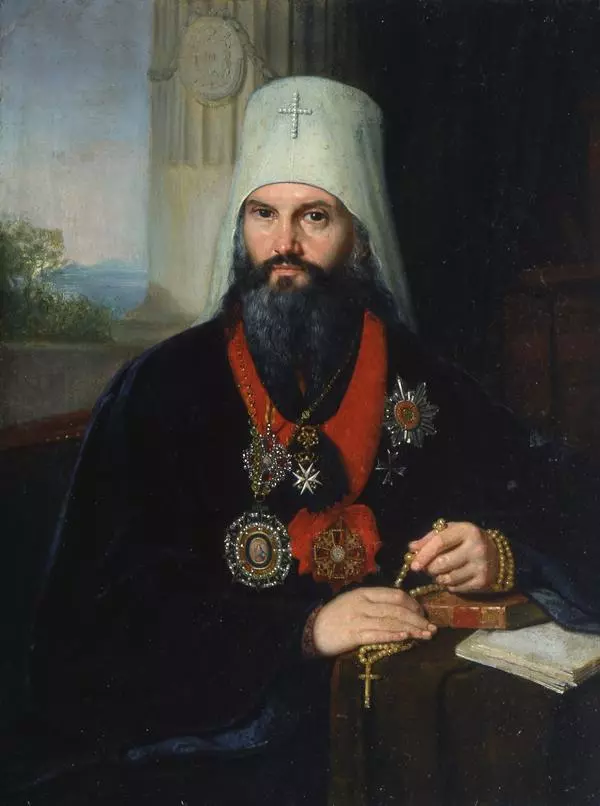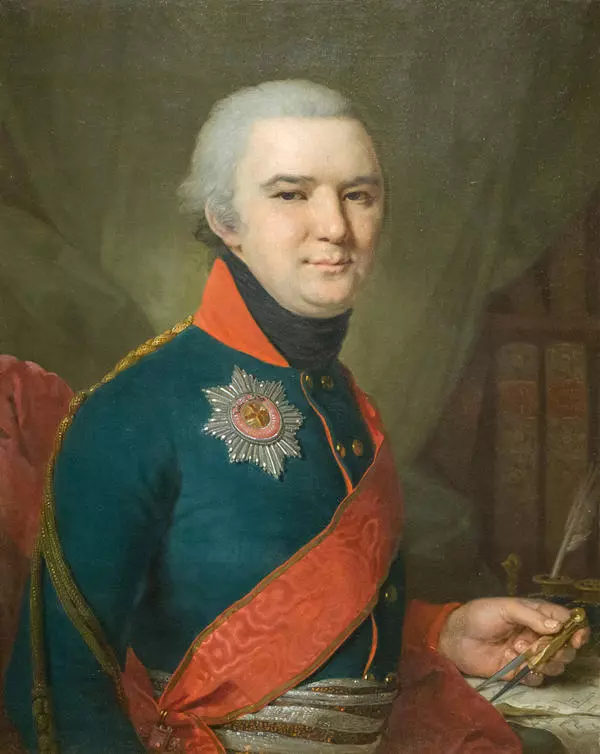The portrait of the Grand Duchess Alexandra Pavlovna was painted approximately at the end of the 18th-19th century. This portrait is a copy from the painting drawn by Vladimir Borovikovskiy, which was painted in 1796. Researchers do not reject the idea that a copy could have been made by Borovikovskiy himself because the style has been imitated with unprecedented accuracy. However the true artist has not yet been identified.
From this copy it is easy to understand Vladimir Borovikovskiy’s artistic style. He aspired to make this portrait of princess Alexandra Pavlovna poetic and elegant. The artist didn’t portray the girl’s appearance with great accuracy and slightly romanticized her look. A crown of roses adorns the head of Alexandra Pavlovna, which emphasizes her youth and freshness. The artist added a landscape in the background of the portrait in order to enhance its effect. He also chose a gentle, sophisticated color with subtle overflows of pearl and pink overtones.
This work of art reflected Vladimir Borovikovskiy’s passion for sentimentality. The name of this approach comes from the French word “sentiment, ” “feeling.” Sentimental artists paid close attention to the intimate experiences of their models. Often models in their portraits indulged in poetic dreams and philosophical thoughts. Vladimir Borovikovskiy often portrayed the characters in his paintings covered in a light mist with despair in their eyes.
In this portrait the Grand Duchess Alexandra Pavlovna was only 13 years old. However, at this age like her royal grandmother Katherine II said, the girl knew 4 languages, drew well, played the harpsichord, and sang and danced. The year this portrait was painted Alexandra Pavlovna had released two publications in ‘Muze’ magazine that she had translated from French. ‘The cheerfulness and the blessings of one peasant, ” and “The debt of humanity.”
At the age of 13 the girl was almost married to the young Swedish King. Their great relatives were occupied with the wedding for political reasons, but some historians claimed that the children were really fond of one another. It was Alexandra Pavlovna who suffered the most from this blow, as she was heartbroken that the wedding did not happen. The Swedish side insisted that the Russian princess convert to Catholicism, but this demand was completely unacceptable for the Orthodox Russian Empire.
Three years after the failed wedding, the girl married the Archduke of Hungary, who genuinely fell in love with her. Their feelings were mutual. Unfortunately, at the age of 17 she died from a fever after giving birth.
